Low-Carb Meal Plans: A Simple Guide to Kickstart Your Health Journey

Hey, I’m Sophie, and if you’re like me, you’ve probably thought about cutting back on carbs at some point. Whether for weight loss, better energy, or a healthier lifestyle, the idea of low-carb meal plans can sound a bit overwhelming. After all, carbs are in so many of the foods we love. But trust me, when I started following a low-carb meal plan, it completely changed how I felt—more energy, less bloating, and much more focus throughout the day. You’re in the right place if you’re curious about low-carb meal plans and how they can benefit you. In this guide, I’ll walk you through a low-carb meal plan, why it works, and how you can create one that fits your lifestyle. I’ll also share my personal experience, tips, and a sample meal plan to make it easier for you to start. What Are Low-Carb Meal Plans? Low-carb meal plans focus on reducing the carbohydrates you consume daily. This means you’ll eat fewer foods like bread, pasta, rice, and sugary snacks. Instead, you’ll replace them with healthier options like lean proteins, vegetables, nuts, and healthy fats. The idea behind a low-carb approach is that when your body has fewer carbs to burn for energy, it starts using fat as its primary fuel source. This can help with weight loss, stabilise blood sugar, and even improve heart health. When I started my low-carb journey, it wasn’t just about cutting out carbs but replacing them with more wholesome, nutrient-dense foods that kept me fuller for longer. Why Choose Low-Carb Meal Plans? Many people wonder if a low-carb meal plan is right for them, especially with so many diet trends out there. From my experience, I can tell you that low-carb eating has several benefits that can make a real difference. 1. Weight Loss and Maintenance One of the most popular reasons people try low-carb meal plans is to lose weight. Reducing carb intake lowers insulin levels, which in turn helps your body burn fat. I’ve personally seen a significant drop in body fat since starting low-carb, and it has made a massive difference in how I feel about my body. 2. Better Blood Sugar Control A low-carb meal plan can be a game-changer for those with insulin resistance or diabetes. Lowering carb intake helps stabilise blood sugar levels, crucial for maintaining energy throughout the day. I’ve noticed my energy levels are much steadier when I follow a low-carb diet than when I eat more carbs. 3. Increased Mental Clarity When I first switched to a low-carb lifestyle, one of the unexpected benefits was how sharper I felt mentally. I no longer had that midday crash where I would feel exhausted or foggy. My energy from a low-carb meal plan is more sustained, and I feel more focused. 4. Reduced Hunger and Cravings Many people struggle with hunger when dieting, but low-carb meal plans can help keep cravings at bay. Foods rich in protein and healthy fats keep you fuller for longer, making it easier to stick to your plan. I was amazed at how little I craved sugary snacks once I cut back on carbs. Common Questions About Low-Carb Meal Plans Before you dive in, you might have a few questions about what to expect. Here are some of the most common ones I get asked about low-carb meal plans: 1. How Many Carbs Should I Eat on a Low-Carb Meal Plan? The amount of carbs you should eat depends on your specific goals. Many people aim for around 20-50 grams of net carbs per day for general health and weight loss. For more advanced plans, such as a ketogenic diet, you might go as low as 20 grams per day. For me, sticking to 30-40 grams a day works best, as it allows me to lose weight without feeling deprived. 2. What Can I Eat on a Low-Carb Meal Plan? You can enjoy a wide range of foods on a low-carb meal plan. Here are some of my go-to foods: Protein: Chicken, beef, pork, fish, eggs Veggies: Leafy greens, zucchini, cauliflower, broccoli, peppers, asparagus Healthy Fats: Avocado, olive oil, coconut oil, nuts, seeds Dairy: Cheese, full-fat yoghurt, cream (in moderation) The key is to focus on whole, unprocessed foods. These provide more nutrients and fewer empty carbs. 3. What About Eating Out or Special Occasions? I know it can be tricky when dining out or celebrating a special occasion. The great news is that many restaurants offer low-carb options, like grilled meats, salads, and vegetables. I’ve learned to be creative with my choices and always feel great after meals, knowing I’ve stayed on track. How to Create Your Own Low-Carb Meal Plan Creating a low-carb meal plan is easier than it seems. It doesn’t require fancy ingredients or complicated recipes. Here’s a step-by-step approach to getting started: 1. Set Your Goals Knowing what you want to achieve is important before you start planning meals. Whether you’re aiming for weight loss, better blood sugar control, or overall health, knowing your goals will help you create a plan that works for you. 2. Choose Your Carb Limit Based on your goals, decide how many grams of carbs you’ll consume daily. Start on the higher end (around 50 grams) and gradually reduce it as you get more comfortable with the diet. 3. Pick Protein and Vegetables for Each Meal Protein and vegetables will form the bulk of your meals. I recommend focusing on various proteins and low-carb vegetables, like leafy greens, broccoli, cauliflower, and zucchini. 4. Add Healthy Fats Healthy fats will help keep you full and provide steady energy throughout the day. Include sources like avocado, olive oil, and nuts in your meals. I love adding a handful of almonds to my salads or having an avocado with my breakfast eggs. 5. Plan for Snacks Snacks are a great way to keep hunger at bay and ensure you get enough nutrients. Healthy snacks could include a hard-boiled egg, a handful of nuts, or
Sustainable Food Trends: How We’re Changing the Way We Eat
Hi, I’m Emily, and if there’s one thing I love, it’s good food. Lately, however, I’ve been thinking a lot more about where my food comes from and how it impacts the planet. If you’re like me, you probably want to make better choices without sacrificing taste or convenience. That’s why I’ve been diving into sustainable food trends—the way we eat is changing for the better, and it’s exciting to be part of it. Why Sustainable Food Matters Food production is one of the biggest contributors to climate change, deforestation, and pollution. But the good news is that more people than ever are choosing sustainable options, and companies are responding. The choices we make at the supermarket or farmers’ market can greatly impact the environment, animal welfare, and even our health. So, what’s changing in the food world? Let’s look at some of the biggest trends shaping the future of food. 1. Plant-Based Eating is Growing Rapidly You don’t have to be vegan to appreciate the benefits of eating more plants. Plant-based eating is booming, and it’s not just about tofu and salads anymore. From oat milk lattes to plant-based burgers that taste just like beef, food companies are getting creative. Why it’s trending: Reduces greenhouse gas emissions from livestock farming Uses fewer natural resources like water and land Appeals to health-conscious consumers looking for nutrient-rich options Even if you’re a meat lover, swapping out a few meals a week for plant-based options can make a difference. 2. Regenerative Agriculture is Taking Root Sustainable farming is nothing new, but regenerative agriculture is taking it further. This method focuses on improving soil health, increasing biodiversity, and capturing carbon in the ground instead of releasing it into the air. What makes it different? Uses cover crops to prevent soil erosion Reduces synthetic fertilisers and pesticides Encourages rotational grazing for healthier livestock and land More farmers are embracing these techniques, and you’ll start seeing more labels in stores highlighting “regeneratively grown” foods. 3. The Rise of Locally Sourced and Seasonal Foods Ever noticed that strawberries taste better in summer? That’s because they’re in season. More people are buying food grown close to home, which means fresher produce, fewer food miles, and support for local farmers. How to eat more locally: Shop at farmers’ markets Join a community-supported agriculture (CSA) program Look for “Australian-grown” labels when shopping By eating with the seasons, you get tastier food and reduce the environmental impact of long-distance transport. 4. Upcycled and Zero-Waste Foods are Gaining Popularity Food waste is a massive issue, but brands are developing clever ways to repurpose what would normally be thrown away. Upcycled foods use by-products from production to create new products—like chips made from leftover vegetable pulp or beer brewed from surplus bread. How you can reduce food waste at home: Use vegetable scraps to make homemade stock Store food properly to extend its shelf life Get creative with leftovers instead of tossing them Less waste means less strain on landfills and a more efficient food system overall. 5. Alternative Proteins are Expanding Beyond Soy Soy has long been the go-to alternative protein, but now we’re seeing options made from peas, mushrooms, algae, and even insects (yes, really!). These protein sources require fewer resources than traditional meat and dairy. Emerging alternative proteins to watch: Mycoprotein – A protein made from fungi, used in meat substitutes Lab-grown meat – Real meat produced without raising animals Insect protein – High in nutrients, though still gaining acceptance in Western countries As technology advances, expect to see more options hitting the shelves. 6. Sustainable Seafood is Becoming a Priority Overfishing has put an enormous strain on ocean ecosystems, but there are ways to enjoy seafood responsibly. More people choose sustainably sourced fish, shellfish, and seaweed to support healthier oceans. How to choose sustainable seafood: Look for MSC (Marine Stewardship Council) or ASC (Aquaculture Stewardship Council) certifications Opt for lesser-known species that aren’t overfished (like sardines or mussels) Choose farmed seafood from responsible sources Sustainable seafood is better for the planet and for ensuring that future generations can continue to enjoy it. 7. Ethical Packaging and Sustainable Supply Chains It’s not just about what we eat—it’s also about how our food is packaged and transported. More brands are ditching plastic for biodegradable or reusable packaging, and businesses are working to cut emissions across their supply chains. What you can do: Bring reusable bags and containers when shopping Support brands that use minimal or compostable packaging Reduce single-use plastics by buying in bulk The less waste we create, the better for the environment. How to Support Sustainable Food Trends in Everyday Life Adopting a more sustainable diet doesn’t mean overhauling your entire lifestyle. Small changes can have a big impact over time. Here’s how to start: Eat more plants – Even one plant-based meal a week makes a difference. Buy local and seasonal – Fresh, flavourful, and supports Aussie farmers. Cut down on food waste – Plan meals, store food properly, and get creative with leftovers. Choose responsible seafood – Look for sustainable certifications. Support ethical brands – Look for businesses prioritising sustainability. Final Thoughts on Sustainable Food Trends How we eat is evolving, and it’s exciting to see how sustainability is becoming a bigger part of the conversation. Whether choosing plant-based options, reducing waste, or supporting local farmers, every choice adds up. What changes have you made to make your diet more sustainable? I’d love to hear your thoughts—drop a comment below, and let’s chat!
Best Food Tours: A Culinary Journey Worth Taking
“Best Food Tours” As a travel lover and dedicated food lover, I’ve long believed that the essence of any culture is found in its food. There’s something about local dishes that truly speaks to the heart of a destination, and I’ve savoured my fair share. I’ve also run (and had the great fortune of being led on) many food tours that travel to the world’s farthest reaches. I now share here my very best food tour experiences because I want you to visit these locations and enjoy what I consider some of the world’s most outstanding culinary adventures. Why Opt for a Food Tour? You may wonder why you should choose a culinary adventure rather than a meal at a fine restaurant. Here are several reasons that I think make food tours a superior choice: Authenticity: Food tours take you off the beaten path; you are served authentic food to the place you are visiting. Cultural Connection: Each dish tells a story. Local guides share fascinating and relatable insights about the history and culture behind their cuisine. Variety: Eating six dishes throughout a food tour is a great way to taste the breadth of a locality’s cuisine. Community: Nothing quite like sharing a meal with a small group of friendly strangers. What to Expect on a Food Tour Upon my first foray into the world of food tours, I was uncertain about what to anticipate. Here’s a framework for what one might experience: Local Guides: Most tours commence with a warm welcome from your guide, who will introduce themselves and engage your group with an intimate knowledge of the food and local area. Tasting Stops: This is part of the tour where you are encouraged to savour each bite. Expect a mix of across-the-board flavours that truly represent the local scene. With about six stops, I can guarantee that everywhere you go will blow your mind more than the last place. Cultural Insights: Yes, this is a food tour, but it’s also a cultural tour. Expect your guide to share fascinating stories about the ingredients, cooking methods, and traditions associated with your sampling dishes. Interactive Experiences: Depending on your guide and the nature of the tour, you might have some opportunities to get hands-on with your food through cooking demonstrations or other activities. Social Interaction: Another thing I love about food tours is how social they are. Chatting with fellow tour-goers makes for a lovely atmosphere on top of enjoying the best bites. My Favourite Food Tours Around the World Melbourne’s Laneway Food Tour: The vibrant food scene in Melbourne makes the hidden alleys throughout the city a delectable experience. My tour took me into some of these clandestine passages where I enjoyed artisanal coffee and dumplings that rival some of the best I’ve ever tasted. Multiculturalism spills into nearly every part of Melbourne, and the guide shared the city’s many gourmet secrets with us. Barcelona’s Tapas Tour: In Barcelona, I took part in a tapa tour of many local bars. Each stop had a different tapas type, ranging from patatas bravas to jamón ibérico. The atmosphere was vibrant, and I enjoyed hearing the stories behind each dish as I sipped a glass of local wine. It was an engaging evening of food, culture, and conviviality. Tokyo’s Street Food Adventure: I am a food lover, and Tokyo is a street food paradise. My street food tour was a highlight of the trip. Not only did I take advantage of the second session of a two-part food marathon, lunch and dinner, but I also savoured each of the following: warm takoyaki, moist and tender sweet mochi, the city’s energy, and the people’s friendliness. Tips for Choosing the Right Food Tour When choosing a food tour, think about this: Research: Seek out tours that have glowing reviews and knowledgeable guides. Websites like TripAdvisor and local travel blogs can point you in the right direction. Your Tummy: Make sure the tour fits your dietary needs. Most guides can tailor the experience to ensure everyone enjoys the food. Size Matters: Small groups usually allow better interaction with the guide and other participants. Time: How much do you want to spend eating? Some tours are a couple of hours long; others take half a day or more. Engaging with Food Tours Having taken a few food tours, I realized they are not merely about consuming food; they are intimate ways of connecting with the culture and the people who make and share amazing food. Here are some strategies for making the most of your food tour: Ask Questions: Don’t hold back. Engage with your guide and the locals. They often have a wealth of knowledge (and stories) that make the food you’re eating—and the people making it—all the more special. Take Notes: If you experience a dish you can’t stop thinking about, write it down. I promise you’ll forget names and recipes in the haze of post-tour excitement if you don’t. Share Your Experience: Chew on it briefly (pun intended). If you can’t tell the folks back home about your food tour, who can? Conclusion Exploring a new destination through its food is an enticing way to indulge in different culinary delights. Food tours are a unique method of connecting with the local culture. They provide unfettered access to meet new people in the warmest way possible, over food. Perhaps most importantly, each food tour is another tour de force of tasting delicious food. Whether you are winding your way through the alleyways of Melbourne or partaking in the Spanish tradition of tapas in Madrid, each tour you embark upon is another memory-making moment. The next time you plan a trip, think about including a food tour in your itinerary. You will do more than taste the food. You will experience the very essence of the culture. Have you ever been on a food tour that lingered in your memory? If so, please reply with your tales in the comments section.
Farm-Fresh Dining: A Delicious Journey to Healthier Meals and a Sustainable Future

Hello, fellow food lovers! I’m Kate, and if you’re anything like me, you’ve probably wondered about the food you’re eating—where it comes from, how it’s grown, and whether it’s the healthiest choice for you and your family. Over the past few years, I’ve discovered a new way of eating that nourishes my body and supports local farmers and the environment. And that, my friends, is what I like to call Farm-Fresh Dining. In this guide, I’ll explain why Farm-Fresh Dining is more than just a food trend, how you can start incorporating it into your own life, and why it feels so good to eat with a purpose. Let’s dig in! What is Farm-Fresh Dining? At its core, Farm-Fresh Dining is all about eating food that is locally grown, fresh, and often organic. These meals are usually free from the preservatives, pesticides, and long-distance travel that can be found in many supermarket options. But there’s more to it than just freshness—Farm-Fresh Dining is also about connecting with the land, supporting farmers in your community, and creating meals that nourish your body and soul. Why Choose Farm-Fresh Dining? There are so many reasons to make the switch, and I can tell you firsthand that it’s been one of the best decisions I’ve made for my health, my family, and the environment. Here are just a few of the benefits: Healthier Meals: Fresh, local produce is packed with nutrients because it hasn’t spent days or weeks in transit. The closer to harvest, the more vitamins and minerals your food will retain. This means you’re getting food that’s both better for you and tastes amazing. Better Taste: I’m sure you’ve noticed how bland some supermarket vegetables can be. When you eat Farm-Fresh Dining, the difference in flavour is clear. The flavours are richer, the textures are more vibrant, and every bite feels more satisfying. Local tomatoes, leafy greens, and herbs just have this unbeatable freshness. Supporting Local Farmers: By choosing farm-fresh ingredients, you’re helping local growers stay in business and expand. These small-scale farmers often use more sustainable methods, which helps protect our natural resources. It’s a win for everyone involved. Seasonal Eating: Eating in tune with the seasons makes me feel more connected to nature. When you eat seasonal produce, you’re also supporting the local agricultural cycle, which has a rhythm that makes sense. Plus, it adds variety to your meals throughout the year—who can resist those juicy summer berries or hearty winter squash? Less Environmental Impact: The environmental footprint is much smaller when your food doesn’t have to travel hundreds of kilometres to reach your plate. Transporting food long distances requires a lot of energy, so by eating locally, you’re cutting down on emissions and helping the planet, too. How to Start Farm-Fresh Dining at Home Okay, so I’ve convinced you that Farm-Fresh Dining is the way to go, but how do you get started? Don’t worry—it’s easier than you might think, and I’m here to guide you through it. Visit Your Local Farmers’ Markets Farmers’ markets are the perfect place to find fresh, local produce. It’s often cheaper than buying from the supermarket, and you get to talk to the people who grew the food! Plus, you’ll find a variety of fresh, seasonal fruits and vegetables, homemade preserves, and even free-range eggs and grass-fed meats. Pro Tip: Take a tote bag or basket to easily carry home all your fresh finds! Join a CSA (Community Supported Agriculture) Program Another fantastic way to get fresh food straight from the farm is by joining a CSA. In a CSA, you pay upfront for a share of the farm’s harvest, and each week or month, you receive a box of fresh produce. It’s like getting a surprise delivery of delicious, farm-fresh ingredients right to your door. Plus, you’re supporting small farmers directly. Grow Your Own If you have the space, why not try growing your farm-fresh food? Even if you only have a small balcony or a few pots on your windowsill, you can grow herbs, tomatoes, or lettuce. There’s something incredibly rewarding about picking your ingredients and knowing exactly where they came from. Plus, it’s fun! Shop at Local Grocery Stores with a Focus on Fresh Produce Not every grocery store is equal when it comes to sourcing locally. Look for stores that focus on fresh, organic produce, and try to buy items with minimal packaging. These stores usually source from local farmers and can give you a better idea of where your food comes from. Cook Seasonally Start experimenting with seasonal recipes! Eating seasonally allows you to enjoy the flavours of the time of year, and finding fresh, local ingredients is easier. In summer, I love making salads with heirloom tomatoes and fresh basil, while in winter, I embrace hearty soups made with root vegetables like parsnips, carrots, and potatoes. Tips for Cooking Farm-Fresh Meals So now that you’ve got your hands on all this gorgeous, farm-fresh produce, how do you cook with it? It’s easier than you might think. Here are a few simple tips: Keep it Simple: Let the ingredients shine by keeping your cooking methods simple. A quick stir-fry, roast, or sauté will bring out the natural flavours of your farm-fresh produce without masking them with too many spices or sauces. Less is More: Sometimes, the simplest meals are the best. A warm bowl of roasted sweet potatoes, a drizzle of olive oil, and a sprinkle of sea salt is all you need for a comforting, nutrient-packed meal. Experiment: One of the joys of Farm-Fresh Dining is the wide variety of seasonal ingredients available. Don’t be afraid to try new vegetables or herbs you’ve never used. Who knows—you might discover a new favourite! Meal Prep: Fresh food doesn’t last as long as supermarket produce, so plan if you’ve bought a big haul from the farmers’ market. Chop, slice, and prep your ingredients so they’re ready to go. This makes cooking during the week easier and ensures you
Starting a Food Truck: Your Ultimate Guide to Getting Rolling

Hey, I’m Mack, and if you’re reading this, you’re probably thinking about starting a food truck. First off—congrats! You’re about to embark on one of the most exciting, challenging, and rewarding journeys out there. I’ve been where you are, full of questions, excitement, and maybe a little nervousness. So, let’s break it all down in simple terms, from someone who’s been in the trenches. Why Start a Food Truck? Food trucks have exploded in popularity over the past decade, and for good reason. They offer the flexibility to be your own boss, the freedom to craft a unique menu, and the ability to bring great food directly to your community. Plus, compared to opening a brick-and-mortar restaurant, the startup costs are much more manageable. But, like any business, there are a few things to figure out before you hit the road. Common Concerns When Starting a Food Truck If you’re like most people, you’re asking yourself questions like: How much does a food truck cost? What permits do I need? How do I stand out in a crowded market? What kind of food should I sell? These are all valid concerns, and trust me, I had the same thoughts when I was starting my food truck journey. Let’s dive into each one so you can get a clearer picture of how to launch your dream business. 1. How Much Does It Cost to Start a Food Truck? Starting a food truck can cost anywhere from $50,000 to $150,000. This range depends on whether you’re buying a brand-new truck, outfitting a used one, or renting a truck to test the waters. Here’s a basic breakdown of the costs: Truck or Trailer: $20,000 – $100,000 (depending on condition and customization) Permits and Licenses: $500 – $5,000 (varies by location) Equipment: $10,000 – $30,000 (stoves, fridges, etc.) Initial Inventory: $1,000 – $2,000 (food, supplies, packaging) Marketing & Branding: $500 – $3,000 (logo, website, social media) The key is to budget carefully and prioritize your spending. Don’t skimp on the essentials, but also don’t feel like you need to go all out on day one. Quick Tip: Start with a used truck if you’re on a tight budget. You can always upgrade later once your business starts gaining momentum. 2. What Permits and Licenses Do You Need? Getting your paperwork in order is one of the trickiest parts of starting a food truck, but it’s crucial to get it right. You’ll need: Business License: Every food truck needs one to operate legally. Health Department Permit: Your truck will need to pass health inspections. Fire Safety Permit: Since your truck will have cooking equipment, this is essential. Parking Permit: Depending on your city, you might need a permit to park and operate in certain areas. Each city and state has its own regulations, so make sure to check with your local authorities. It may seem like a lot, but once it’s done, it’s done! 3. How to Stand Out in a Crowded Market This is where things get fun. There are thousands of food trucks out there, but only one you. Your personality, your unique menu, and your branding are what will make you stand out. Nail Your Concept: Think about what makes your food truck unique. Are you doing gourmet grilled cheese? Vegan tacos? Korean BBQ? Focus on a specialty and do it really well. Build a Strong Brand: Create a memorable name, logo, and design for your truck. This helps people remember you and find you easier on social media. Engage on Social Media: Instagram and Facebook are your best friends. Post mouth-watering photos, share your truck’s location, and engage with your customers. Encourage people to tag you in their posts! Quick Tip: Offer something no one else does. Whether it’s a unique dish, a cool truck design, or a fun customer experience, give people a reason to choose you over the competition. 4. What Kind of Food Should You Serve? This is probably the most personal part of the process. It’s your food, your passion, and it should reflect that. But here are a few things to consider when deciding on your menu: Keep It Simple: You don’t need a 20-item menu. Focus on a few signature dishes that you can execute perfectly every time. Think About Prep Time: You’ll be working in a small space, so choose dishes that are easy to prep and don’t take forever to cook. Cater to Your Audience: Think about the crowd you’ll be serving. Are you parking near an office building during lunch? A popular nightlife spot on weekends? Tailor your menu to what people in your area want. My Personal Story: How I Started My Food Truck When I first thought about starting a food truck, I was overwhelmed. I didn’t have a ton of money, and I had no clue how to run a business. But I loved cooking, and I knew I had something special to share. I started small, with a used truck and just a few menu items. I focused on building relationships with my customers, keeping my food simple but high-quality, and staying consistent with my brand. Was it easy? No. Was it worth it? Absolutely. Today, my food truck is thriving, and I’ve even expanded to catering events and festivals. If I can do it, so can you. Final Thoughts: Ready to Start? Starting a food truck isn’t easy, but it’s incredibly rewarding. You get to share your passion with the world, meet amazing people, and be your own boss. If you’re ready to take the leap, do your research, plan carefully, and most importantly—believe in yourself. If you’ve got questions, drop them in the comments below! I’d love to help you out. And if you found this guide helpful, feel free to share it with anyone else who’s thinking about starting a food truck. Good luck, and I’ll see you on the road!
The Ultimate Guide to Food Truck Menus: Uncovering 5 Hidden Gems in Every Bite
Explore a diverse array of flavours and cuisine on food truck menus. Experience the convenience and excitement of street food with unique and delicious offerings. Introduction: Have you ever wondered where, on wheels, the most scrumptious tastes can be found? With their style of mouthwatering delicacies that fit every flavour, food trucks have swept the culinary scene. This guide to food truck menus will take you on a compelling adventure to discover five hidden treasures that will hearth your flavour receptors and leave you starving for more. Prepare to tour the numerous universes of food truck food and discover the gastronomic adventures waiting! The Rising Trend of Food Truck Menus Food vans have transformed the dining experience by supplying gourmand delicacies on the streets. Foodies who look for uncommon and quick meal answers have come to love them because of their mobility and adaptability. These cellular restaurants have revolutionised our perceptions of road cuisine and raised its requirements for gastronomic excellence. Exploring the Diversity of Food Truck Menus The extensive spectrum of cuisines and flavours food vans present makes them most fascinating capabilities. Every meal truck adds something different to the table, from delectable tacos to savoury burgers and uncommon fusion cuisine. Reflecting the chef’s ardour and inventiveness, the dishes highlight their culinary know-how and capability to mix tastes creatively. Unveiling the Hidden Gems Let’s now explore the food truck universe’s hidden treasures. These are the specific vehicles, among others, that offer terrific tastes and unforgettable dining environments. As we discover these gastronomic jewels, get geared up to be astounded. First Hidden Gem: The Spice Waggon Imagine getting into a food truck that smells like distinguished spices and riding to far-off international locations. Specialising in Indian avenue delicacies, the Spice Waggon provides a mouthwatering selection of curries, biryanis, and tantalising avenue fare. Their butter chicken is a crowd favourite, given that its rich, creamy sauce wonderfully counteracts the spiciness. This gastronomic journey will take you to Mumbai’s busy streets. Second Hidden Gem: The Bistro Bus Imagine a food truck that offers the conveniences of road meals and the vibe of a hip cafe. Serving connoisseur sandwiches, salads, and homemade cheeses, the little cellular restaurant The Bistro Bus has the soften-in-your-mouth flavour in its signature dish, Truffle Grilled Cheese, which will make you want more. Savour the tastes of refinement and the active scene of sidewalk eating. Third Hidden Gem: The Seafood Shack For those who savour the taste of the sea, The Seafood Shack is a true delight. This hidden gem is dedicated to serving you the abundance of the ocean on a plate. From their delectable lobster rolls to their expertly grilled prawn skewers, every dish is a seafood lover’s fantasy come true. Their commitment to sourcing the best quality ingredients ensures that every bite is a burst of flavour, indulging your senses in a seafood feast. Fourth Hidden Gem: The Taco Truck Tacos are a well-liked street food that The Taco Truck elevates to a whole new level. From classic favourites to innovative fusion combinations, this hidden gem offers a wide variety of tasty tacos. But what sets them apart is their Korean BBQ taco, a unique fusion of spicy gochujang sauce and tender marinated beef, meeting the tangy kick of bitter kimchi. Every bite promises a burst of flavour, a dance on your taste buds that you won’t soon forget. Fifth Hidden Gem: The Sweet Stop Without satisfying your sweet taste, no gastronomic adventure is whole; for this reason, The Sweet Stop is an appropriate place for dessert enthusiasts. This meal truck’s specialities are mouthwatering delicacies, including homemade ice cream, delicious cupcakes, and rich milkshakes. With its tender cake and rich cream cheese icing, their Red Velvet Cupcake is blissful. As you delight in their delectable works of art, treat yourself to a moment of sheer delight. Conclusion: Hopefully, by the end of our gastronomic adventure over meal truck menus, you will be stimulated to discover the hidden treasures in your place. From The Bistro Bus’s tremendous sandwiches to The Spice Waggon’s heady spices, every food truck offers an extraordinary eating experience that deserves appreciation. So, undertaking out of doors your comfort sector, welcome the explosion of tastes, and allow the menus of food trucks to transport you on a gastronomic ride you will not soon neglect. Good appetite!
How to Store Coffee Beans Like a Pro: 7 Expert Tips for Freshness and Flavor

Discover 7 expert tips for storing coffee beans to preserve freshness and enhance flavor. Learn how to choose the right container, avoid common mistakes, and enjoy a perfect cup of coffee every time. Coffee. It transcends only a mere morning routine; it’s a high-quality artistic expression. For a huge number of individuals, a perfect cup of espresso begins with advanced, pleasant beans. However, have you ever contemplated the methods to maintain the top-rated freshness of those beans? Effective storage is an important element in improving the exceptional quality of a brew. This educational course will provide you with seven professional ideas on keeping your espresso beans like a professional, ensuring that every cup is as enjoyable as the preliminary one. Introduction: The Art of Coffee Preservation Lately, you have offered a bag of your selected espresso beans. If you fail to keep the espresso beans well, you could end up with a disappointing cup that doesn’t meet your expectations. Coffee is a perishable commodity. The meals are highly aware of oils and touchy chemical substances, contributing to their flavour. Appropriate safety strategies are beneficial in maintaining these characteristics, ensuring that every sip stays as fresh and appealing as possible. Now, let’s discover the fundamental elements of coffee bean storage and learn how to keep the best flavour of your espresso. Tip 1: Invest in Quality Storage Containers Not all packing containers are identical, especially when it involves storing espresso beans. Packing containers should be applied, each hermetically sealed and opaque to mild. What is the cause? Espresso beans can quickly become stale due to the quick oxidation that air and light precipitate. Conceive your coffee beans as a porous item. Upon exposure to air, they go through moisture absorption and, for this reason, enjoy a loss of their vibrant flavours. Airtight bins prevent air and moisture infiltration, while mild-proof packing containers defend the beans from UV rays that could go to the beans. Search for boxes composed of substances, including glass or high-grade plastic, and steer clear of those with metallic closures that could rust or corrode through the years. An advantageous preference could be a container prepared with a CO2 valve, which allows the discharge of gases while stopping air access. This is especially high quality if you buy your beans in huge quantities. Purchasing a wonderful container affords secure and comfortable surroundings for your coffee beans. Tip 2: Store Beans Away from Heat Sources High temperatures ruin the freshness of espresso. Just as you wouldn’t go away from a smooth cake in a warm kitchen, you may keep your espresso beans away from warmth resources. Heat can quickly wreck coffee’s oils and chemical substances, giving it an ugly and painful flavour. Where is the high-quality area where espresso beans are kept? They are first-class, stored in a fabulous, dark place, away from a blazing oven and direct daylight. Consider this analogy: Putting a pot of butter on a hot stove will quickly melt and crumble. Similarly, coffee beans must be stored in a consistent, cool environment to preserve their unique flavour. The best location is usually a closet or storage area. If you plan to store beans for a long time, choose a temperature-controlled storage area to ensure optimal conditions. Tip 3: The Truth About Freezing Coffee Beans The practice of cryogenic protection of coffee beans is a hotly debated subject among espresso connoisseurs. While some endorse it, others steer clear. Freezing coffee beans can extend their shelf life, which is a significant benefit. However, it’s not without drawbacks. The freezing procedure and subsequent thawing can cause condensation to form, probably affecting the beans’ texture and flavour. To preserve your espresso beans, it’s useful to freeze them in an occult field. Only freeze the beans you do not intend to consume in the future. This will lessen the frequency of box establishment and minimise the beans’ exposure to air. However, it’s critical to observe that after beans are frozen and thawed, they need to be utilised directly to prevent the unwanted occurrence of freezer burn. Freezing coffee beans may be likened to inducing a country of deep shut-eye, but it is useful but contains a few degrees of hazards. Tip 4: Whole Beans vs. Ground Coffee Have you ever pondered the reason behind the common advice to use whole beans instead of pre-ground espresso? The answer resides inside the country of being recently produced or obtained. Unprocessed coffee beans preserve their flavours and smell for an extended period compared to ground coffee. Grinding coffee beans increases their surface area, leading to a faster loss of freshness. It is similar to cutting a fruit; as soon as sliced, it evolves to undergo oxidation and rot. By pulverising your espresso beans right now before brewing, you are positive that every cup is infused with the maximum harvested and colourful flavours these days. If you have ever prepared a cup of espresso with freshly ground beans, you’re privy to the wonderful disparity in perfume and flavour. Whenever possible, invest sensible funds in a first-rate grinder and savour the enhanced, more dynamic flavours of espresso that have been freshly ground. Tip 5: Monitor Coffee Bean Freshness Despite employing the most suitable maintenance strategies, espresso beans have a confined lifespan. Knowing when your beans have reached their most advantageous state is crucial for retaining the distinction of your espresso. Fresh beans commonly possess a sturdy perfume and a lustrous, oily appearance. As they mature, they regularly lose their shine and may collect an unsightly odour. To ensure the taste and pleasantness of your beans are high, applying them after a few weeks of roasting is critical. Many coffee enthusiasts buy smaller portions of extra coffee frequently to ensure they usually have freshly roasted beans. If you already know that your beans have lost their shine or odour, it’s important to update them immediately. Think of it like an extremely good wine; the more cautiously you keep it, the longer it lasts, but
Best Sustainable Dining: 7 Expert Tips for Indulging in Eco-Friendly Gastronomy
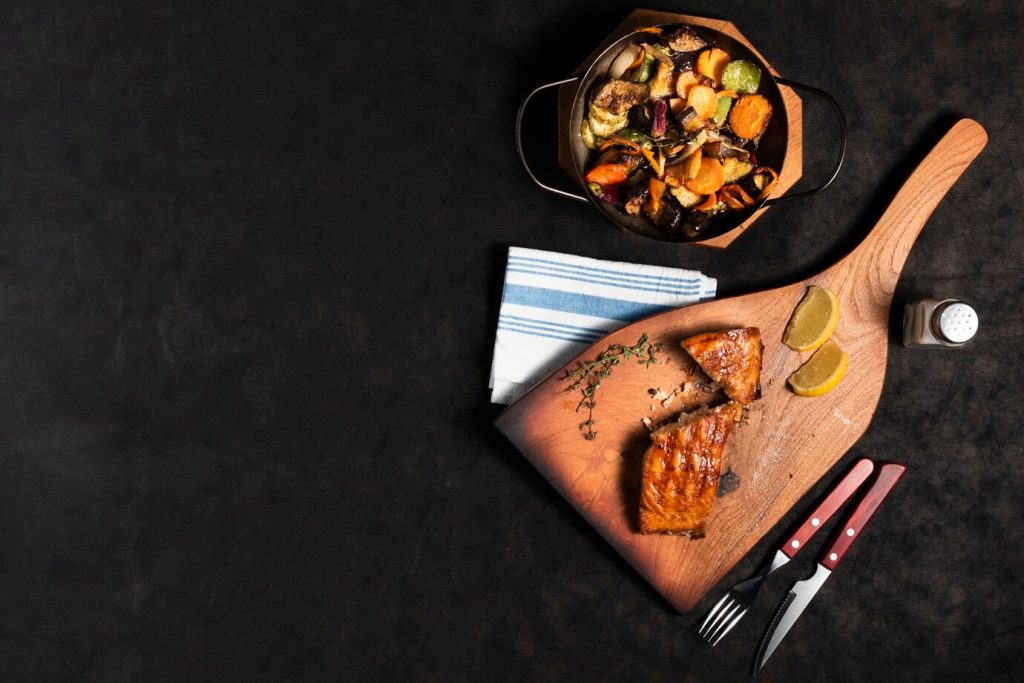
Discover the best sustainable dining options. Explore eco-friendly restaurants that prioritize local ingredients, waste reduction, and environmentally conscious practices. Sustainable eating is no longer a gap desire but a growing movement. At AJI Restaurant, we believe in the power of best sustainable dining to delight your senses while honoring the earth. Our commitment to green gastronomy is woven into every dish we serve, from sourcing nearby elements to minimising waste. We’ll share seven guidelines for indulging in sustainable dining. Whether you’re a pro-eco warrior or simply starting your journey towards greener alternatives, these insights will help you revel in food that can be pleasurable and sustainable. Join us in embracing the destiny of eating, wherein every bite contributes to a more fit planet. 7 Expert Tips for Indulging in Eco-Friendly Gastronomy: 1. Source Fresh Eat Locally When it comes to ingesting sustainably, one of the most impactful steps you can take is to supply your substances domestically. This effortless shift helps neighbourhood farmers and substantially reduces your carbon footprint. At Aji Restaurant, we’re captivated with bringing the most up-to-date local produce directly to your plate. Local sourcing is set beyond just proximity. It’s all about building a relationship between the land and those who work it. Selecting local materials reduces the space food must travel through to reach your plate, lowering greenhouse gas emissions. Furthermore, neighbourhood produce is regularly fresher and more nutritious, as it doesn’t require lengthy durations of transportation and storage. 2. Embrace Seasonal Menus When it involves dining sustainably, embracing seasonal menus is a sport-changer. “Seasonal menus are not just a trendy term; they’re a smart way to lower our environmental impact.” Selecting substances that season reduces the strength to develop, store, and deliver food. This approach has fewer greenhouse gasses and a smaller carbon footprint. Plus, in-season produce is more energizing, tastier, and regularly more excellent and nutritious. It’s a win for your taste buds and the planet. At Aji, we take seasonal dining seriously. Our chef’s paintings intently with local farmers to supply the freshest substances at their peak. This collaboration allows us to craft a menu that evolves with the seasons, offering dishes that aren’t most effective but delicious but additionally environmentally aware. Each dish tells the season’s story, from summertime’s colourful salads to wintry weather’s hearty root greens. 3. Plant-Based Power Transferring to a plant-based diet is one critical sustainable lifestyle choice. Eating a plant-based diet reduces the need for animal husbandry, deforestation, and your carbon footprint. It also conserves water. A tasty and nourishing plant-based meal is available on our menu. Consider our Quinoa Avocado Salad, a filling and nutritious aggregate of quinoa, juicy avocado, brilliant vegetables, and a zingy lime dressing. Try this slow-cooked, spice-infused lentil stew to experience heat throughout. These dishes could be more accurate for you; additionally, they assist sustainable farming practices and reduce your environmental effects. Each bite is a step toward a healthier planet and a more balanced food plan. 4. Sustainable Seafood Choices Select seafood that comes from sustainable sources to help protect marine areas. Ocean environments are being harmed through overfishing and destructive fishing strategies, which might cause fish populations to drop. Selecting ethically sourced seafood contributes to the lengthy survival period of marine existence. Apart from our MSC-certified wild Alaskan salmon, we have a selection of sustainable seafood options available on our menu. Grilled to perfection and served with a seasonal vegetable medley, this dish is a delight in your flavour buds and an accountable desire for the planet. Every chew counts and with our sustainable seafood selections you could experience your meal knowing you’re making a practical impact. 5. Waste Not, Want Not One of the only approaches to reducing meal waste is to note component sizes. When you’re at Aji, you’ll notice our portions are designed to be pleasurable without immoderate—with this method, there is much less food left on the plate and greater appreciation for each chew. Plan your meals: Make a buying list and stick to it. Avoid impulse buys that may lead to waste. Utilise Leftovers Creatively: Make today’s lunch out of last night’s meal. Vegetable leftovers can be used. Freeze it: If you’ve cooked too much, freeze the extras for another day. This now not only reduces waste but also saves you time inside Destiny. Aji’s Waste Reduction Practices: Composting: We compost organic waste, turning it into treasured soil for neighbourhood farms and gardens. This not only reduces landfill waste but also supports sustainable agriculture. Donation Programs: Surplus food that meets protection standards is donated to nearby shelters and food banks, ensuring that it goes to the ones in need instead of ending up in the bin. 6. Eco-Friendly Packaging Packaging waste is another vast environmental concern. Single-use plastics and non-recyclable materials contribute to pollution and landfill overflow. Consider the adventure of a takeout field. From production to disposal, it leaves a carbon footprint. Non-biodegradable packaging can linger within the surroundings for many years, harming the natural world and ecosystems. Aji’s Eco-Friendly Solutions Biodegradable Packaging: Our takeout containers and utensils are made from biodegradable substances that spoil, evidently reducing environmental impact. Reusable Options: We inspire customers to carry their packing containers and provide incentives. This small change could make a massive distinction. 7. Community Engagement and Education We can create sustainability with others; it takes a community. That’s why Aji Restaurant is devoted to attracting and teaching our clients about sustainable practices. We host workshops where you may learn about everything from composting at home to creating green alternatives daily. Our partnerships with neighbourhood environmental organizations amplify our effect, permitting us to help with broader tasks that benefit the whole network. We’re happy with the certifications and requirements we adhere to, especially in our seafood offerings. Our commitment to sourcing sustainably ensures that our seafood isn’t always the best scrumptious but additionally responsibly harvested. Start your sustainable dining journey today! Discover the art of sustainable dining excellence with AJI Restaurant’s curated guide to green gastronomy. Delve
Coffee Beans: 5 Expert Tips to Choose the Perfect Beans for Your Brew

Discover the secrets to choosing the perfect coffee beans for your brew with our expert tips. Learn about flavor profiles, bean types, roast levels, and more to enhance your coffee experience. When crafting the appropriate cup of coffee, the adventure starts by choosing the right espresso beans. I’ve spent endless hours exploring the espresso sector and determined the intricacies of deciding on the correct beans. Let’s dive into seven professional guidelines to raise your coffee recreation and help you find the perfect espresso beans in your brew. I. Introduction Do you consider the primary time you sipped a cup of espresso that made you pause and relish every second? For me, it became a cold morning in a quaint café tucked away within the mountains. The aroma of freshly floor beans crammed the air, and the first sip became a revelation. The coffee became rich, fragrant, and unlike anything I’d ever tasted. At that second, I discovered the profound effect that the right espresso beans should have on my daily ritual. Choosing the precise coffee beans isn’t always choosing a bag off the shelf. It’s an artwork form, a technological know-how, and a non-public adventure all rolled into one. In this newsletter, I’ll share seven expert recommendations to help you select the pleasant coffee beans for your chosen brewing technique. Whether you’re a coffee enthusiast, a pour-over perfectionist, or a French press fanatic, these pointers will guide you in making informed selections that suit your flavour and brewing fashion II. Identifying Flavor Profiles Understanding your flavour preferences is one of the first steps in choosing the correct coffee beans. Coffee can offer numerous flavour profiles, from fruity and floral to nutty and chocolaty. But how do you identify what you want? Start by considering the flavours you experience in other foods and drinks. Do you have a candy tooth, or have you decided upon something extra savoury? You can also love the brilliant acidity of a crisp apple or the wealthy, deep flavours of darkish chocolate attraction to you. These preferences offer clues about the kinds of coffee you enjoy. When tasting espresso, be aware of the nuances in flavour. Consider the aroma, the initial flavour, the frame (how it feels in your mouth), and the aftertaste. Is it mild and delicate or ambitious and robust? Some coffees have a bright acidity with citrus or berry notes, while others can be smoother with tips of caramel or nuts. Understanding these flavour profiles allows you to narrow down your picks. For instance, if you revel in fruity and floral notes, you might pick beans from Ethiopia. If you lean towards a richer, chocolatey flavour, beans from Central and South America may be more to your liking. Exploring unique flavour profiles may be a satisfying journey of discovery. III. Coffee Bean Types When it comes to espresso beans, you ought to learn a few charming Arabica and Robusta beans. Each of these beans has specific tendencies that could beautify your espresso’s leisure. Arabica Arabica beans are the most well-known and widely consumed coffee bean, accounting for 60-70% of the arena’s coffee production. These beans are seemed for their smooth, complex flavours and reduced caffeine content compared to Robusta. Arabica beans are commonly grown at higher altitudes, contributing to their nuanced flavour profiles. Arabica espresso tends to have a much wider variety of flavours, along with fruity, floral, nutty, and chocolaty notes. The acidity is usually extra, offering a colorful, energetic flavor. Due to their sensitive and problematic flavours, the ones beans are frequently preferred for sturdy-factor coffee. Robusta Conversely, robusta beans are renowned for their amazing, robust flavours and elevated caffeine attention. They are frequently characterised as having a thicker frame and a greater earthy, bitter flavour. Robusta beans are easier and less luxurious to raise when they’re frequently planted at decreased elevations and have more resistance to pests and illnesses. Although Robusta has occasionally appeared as Arabica’s superior, it does have a following of its very own. It is a not unusual alternative for espresso mixes due to its powerful flavour and increased caffeine stages, contributing to a rich crema and a sturdy basis. Knowing the distinctions between Arabica and Robusta when choosing coffee beans will help you make better choices. Arabica coffee may be an exceptional option if you like smoother and more sophisticated coffee. Try Robusta if you prefer a stronger, more potent flavour. IV. Coffee Origins and Terroir The basis of coffee beans drastically influences their flavour, just like wine. Terroir describes the unique combo of geography, soil, and weather that impacts the tendencies of espresso beans. International coffee is produced in specific places; knowing those variations facilitates you in picking out espresso that tastes better. African Coffees African coffees, particularly those from Ethiopia and Kenya, are famed for their excellent, fruity, and flowery flavours. Bright acidity with notes of citrus, berries, and jasmine are not unusual characteristics of Ethiopian coffee. Conversely, Kenyan espresso is generally fuller-bodied, with flavours of tomato and blackberry and an acidity comparable to wine. Latin American Coffee from Latin America, including Brazil, Colombia, and Costa Rica, is praised for its approachable and properly balanced flavour profiles. Brazilian espresso generally has an easy frame, minimum acidity, and a nutty, chocolaty flavour. Colombian espresso is famed for its medium frame, lively acidity, caramel, and purple fruit flavours. The flavour of Costa Rican coffee is frequently crisp, clear, and slightly citrusy. Asian Coffees Asian coffees from Vietnam and Indonesia are famed for their strong, spicy, and earthy flavours. Sumatra and distinct Indonesian coffees are recognised for their wealthy-bodied, low-acidity, chocolate, earth, and spice flavours. Vietnamese espresso is usually robust and flavorful, frequently combined with sweetened condensed milk in traditional Vietnamese espresso recipes. Finding your perfect cup of espresso and discovering new flavours can be excitingly done by investigating the terroir of numerous coffee-growing worldwide locations. Try numerous origins in your beans and notice how every location’s specific traits mesh along with your non-public alternatives. V.
The Top 4 Destinations for Experiencing the Best Global Cuisine: Savoring Diversity
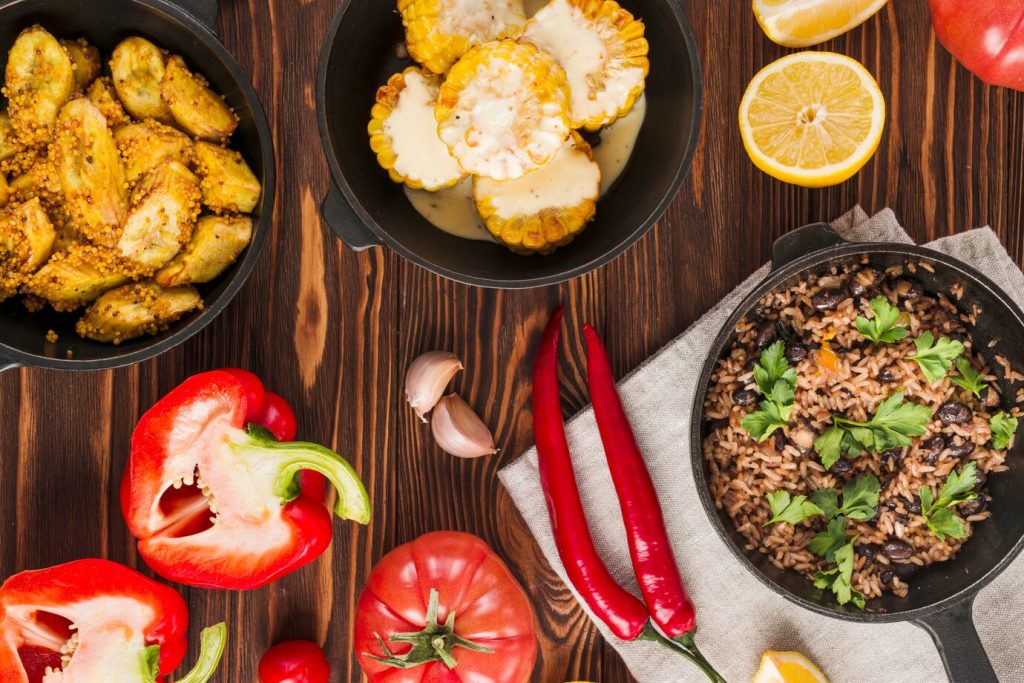
Embark on a tantalizing journey through the world’s top culinary hotspots with our guide to the best global cuisine. From the sizzling streets of New York City to the aromatic markets of Marrakech, discover diverse flavors, savory delights, and cultural treasures in every bite. How much does experiencing different cuisines from around the world captivate your interest as a food enthusiast? If that is indeed the situation, you will greatly enjoy this! Explore the captivating realm of foreign food by uncovering the four premier destinations for sampling dishes from various parts of the globe. One might satisfy their need for exploration by embarking on a gastronomic journey through the vibrant markets of Marrakech or the bustling thoroughfares of Bangkok. Amidst the diverse culinary traditions, anyone might choose a meal they find pleasurable. Prepare yourself for an immersive gastronomic trip worldwide with this remarkable literary work. Every renowned restaurant in paradise boasts unique specialties, menu offerings, and concealed gems, contributing to its indelible allure. The island is renowned as a culinary export hub due to cuisines such as tapas from Barcelona, sushi from Tokyo, spicy curries from Delhi, and aromatic spices from Istanbul. One might benefit from embracing the distinctive flavours, fragrances, and textures in various global culinary traditions. Whether one is a connoisseur or an avid traveller, we will embark on a journey to four nations to experience their exquisite culinary offerings. Prepare yourself; a multitude of choices will reveal themselves. New York City, USA: A Melting Pot of Flavors Step into the vibrant tapestry of New York City, where the aroma of several culinary traditions fills the air and tales of culinary genius are whispered in every corner. This dynamic city’s food is more than fuel; it’s a monument to cultural heritage, innovation, and historical importance. The central business district encompasses various dining establishments that exhibit the region’s abundant cultural diversity through culinary offerings. Authentic Chinese dim sum, renowned for its aromatic spices and iconic New York-style pizza slices, is a gateway to an extensive gastronomic journey. Nevertheless, the vibrant street food culture of New York may be the driving force behind its restaurant scene. While traversing the vibrant thoroughfares, one may encounter a genuine gastronomic spectacle. Each mouthful showcases the diverse range of cuisine in the city, whether you are indulging in the delicious delights of a halal food truck or the sizzling pretzel of a sidewalk seller. The optimal way to explore New York City is by walking, accompanied by a snack, such as taking a leisurely walk around Central Park or navigating the well-illuminated streets of Times Square. Each morsel at a restaurant in New York City narrates a distinct tale. Seoul, South Korea: A Symphony of Korean Flavors Upon visiting Seoul, individuals are immersed in a realm of Korean gastronomy that may be likened to a meticulously arranged symphony. Food assumes several cultural functions in this vibrant urban hub, extending beyond its practical purposes. It engrosses all senses and leaves a profound impact. Indulge in a diverse range of Korean delights on a culinary journey. Each meal narrates a tale of cultural legacy, ingenuity, and exceptional skill; the kimchi is piquant, and the bibimbap is abundant in nutrients. One of the most effective ways to experience Korean cuisine is to explore one of Seoul’s numerous vibrant street food markets. While traversing the intricate labyrinth of Gwangjang Market, it is advisable to temporarily halt the vendors that offer gimbap (seaweed rice buns) and bindaetteok (mung bean pancakes). Alternatively, you can stroll down the well-lit streets of Myeongdong, fully engrossed in the strong aroma of stews and meats being cooked. In Seoul, tourists are highly recommended to sample street foods such as tteokbokki (fermented rice cakes) and hotteok (sweet pancakes). The taste and consistency are skillfully harmonized in each mouthful, leaving you craving more after consuming only one. Experience a thrilling gastronomic journey as you indulge in Seoul’s vibrant and varied food! Buenos Aires, Argentina: Tango with Taste Buds Enjoy various dishes in Argentina’s capital city, Buenos Aires. Like many other parts of the city, the Culinary culture is vibrant and interesting. Any meat lover will be satisfied by the exquisite steaks and empanadas. Traditional parrillas or steakhouses offer the highest quality Argentinean cuisine. Skilled grillmasters skillfully cook tender beef slices over open flames, enveloping the atmosphere with the fragrant essence of smokiness. The ideal complement to a steak is a serving of robust Malbec wine accompanied by a piquant chimichurri sauce composed of parsley, garlic, and a blend of spices. Amidst this, Buenos Aires’s food scene is anything but boring. Anyone with a sweet tooth will be in heaven there. Among the best options are the succulent empanadas, the silky cheese, the savoury alfajores, and the little biscuits filled with dulce de leche. Whatever part of Buenos Aires you end up in, whether it’s the chic Palermo neighbourhood or the old San Telmo district, you’re sure to find a restaurant with delicious food. Get out your knives; Argentina’s cuisine is sure to impress! Marrakech, Morocco: A Spice Bazaar for the Senses Please accompany me on a culinary exploration of Marrakech, a historic city in Morocco. Prepare to be engrossed by the vibrant municipality’s olfactory stimuli. Moroccan cuisine’s distinctive spice blends and profound cultural origins contribute to the artistic nature of every meal. Exploring a conventional riad in Marrakech will ensure your visit is an unforgettable experience. The secret treasures are nestled within a splendid courtyard adorned with elaborate tiles and lush vegetation. Experience the opulent treatment of genuine Moroccan hospitality and indulge in delicious culinary offerings such as the delectable lamb tagine and the velvety couscous. There are more aspects to the culinary journey that are not immediately apparent. The medina’s labyrinthine streets will captivate you with the aromas of recently pulverised spices and culinary vessels. Subsequently, indulge in the finest street cuisine in Morocco, including delectable harira soup, crispy pastilla, and piquant merguez sausages. Experience a remarkable gastronomic journey in a magnificent riad or
